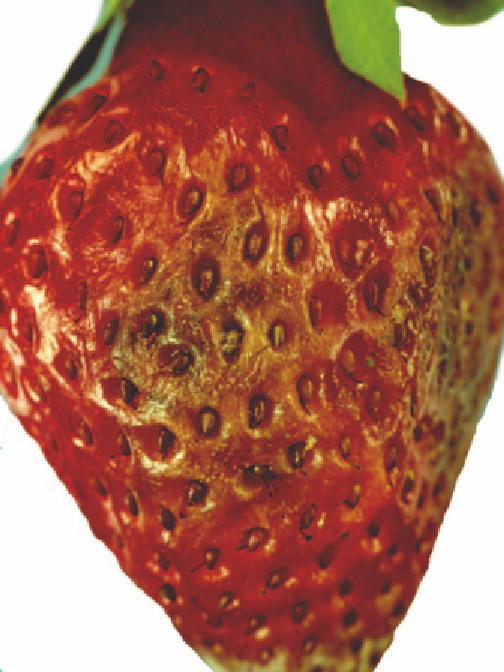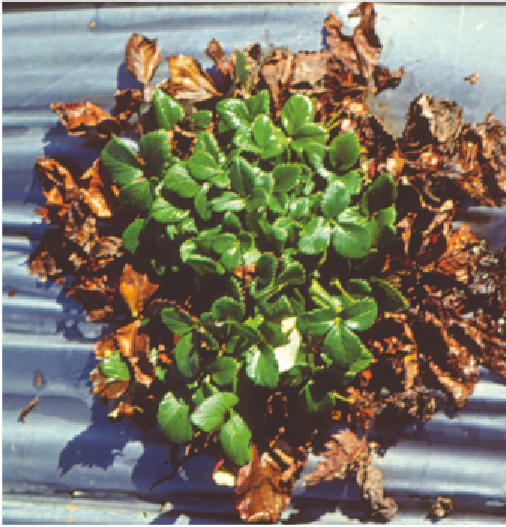Agriculture Reference
In-Depth Information
TAN-BROWN ROT
■
Management
•
Use cultural practices, such as plastic mulching and weed
control, to minimise the disease.
Cause
The fungus
Discohainesia oenotherae
(anamorph
Hainesia
lythri
).
VERTICILLIUM WILT
■
Symptoms
This disease is first seen as small, slightly sunken, tan or
pink spots. The spots are present on both green and ripe
berries, enlarging more rapidly on ripe fruit.
Cause
The fungus
Verticillium dahliae
.
Symptoms
The most common symptom is a slow wilting and death
of the older leaves. Only one or two leaves will be wilted
at any one time and these generally die before others begin
to wilt. This eventually results in an outer ring of dead
leaves with a central tuft of green, erect leaves. These may
also succumb, and the plant finally dies.
Source of infection and spread
The fungus occurs worldwide. It can cause disease on
virtually all plant parts and can infect many plant species.
The disease is favoured by prolonged or heavy splashing
rain. The fungus is regarded as a weak pathogen, requiring
wounds to the epidermis (e.g. insect bites, sand damage)
to infect fruit.
Source of infection and spread
The fungus is a common soil inhabitant and may survive
there for long periods. It may also be introduced in
diseased runners. It invades the plant through the roots
and grows into the water-conducting tissues of the crown.
The disease is generally serious only in the cooler months
of the year and, in Queensland, plants that have not died by
mid-September often recover. The fungus attacks many
other crop plants and weeds; for example, tomato, potato,
Importance
Usually, this is a minor disease, occurring more commonly
in overripe, soft fruit.
Fig 18.36 Verticillium wilt in strawberry. The older, outer leaves
slowly wilt, turn brown and die.
Fig 18.35 Tan-brown fruit rot causing slightly sunken, tan or pink spots.













